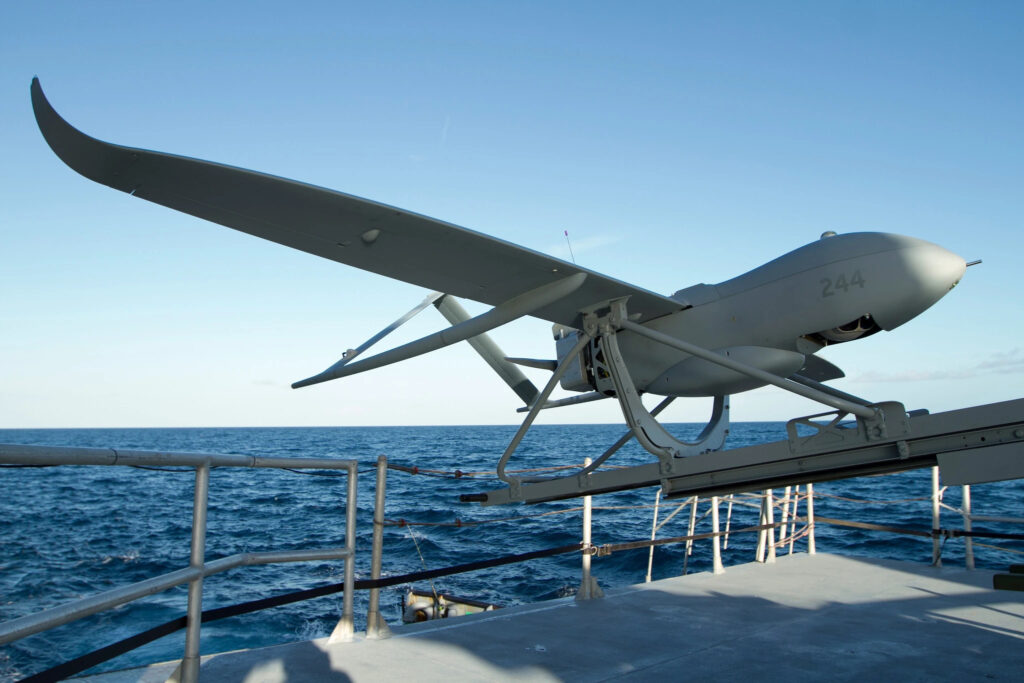
ARLINGTON, Va. — The Aerosonde unmanned aerial system has been deployed on a U.S. Navy Arleigh Burke-class guided-missile destroyer serving in the U.S. 7th Fleet, giving the Flight I/II DDG — which does not have the organic helicopter facilities of the Flight IIA and subsequent versions of the DDG — an organic aerial surveillance capability.
Wayne Prender, Textron Systems’ vice president for Air Systems, told Seapower March 31 the DDG — which he was not at liberty to name — deployed with an Aerosonde system on board in March. The system is being operated under a contractor-owned/contractor-operated arrangement.
Prender said a second DDG would deploy with an Aerosonde system later this year. He also said that for three years an Aerosonde system has been operational on board the Lewis B. Puller-class expeditionary sea base ship USS Hershel “Woody” Williams in support of the U.S. 2nd Fleet.
Prender said the deployments are “helping to set the calculus for real-world operations.”
The Aerosonde can carry a variety of sensors including an electro-optical camera, an Automatic Information System receiver, and other special payloads. The UAS can perform wide-area search, expanding the search horizon of the host ship. The system is fully integrated into the ship’s combat information center.
The UAS uses less fuel — about one pound per hour — than an MH-60 helicopter, which burns about 1,000 pounds per hour. The Aerosonde uses heavy fuel, the same fuel used by the ship’s turbines, so no provision for a different fuel is needed.
An Aerosonde can be operated by a team of three contractor personnel. The fixed-wing version can be launched and recovered in Sea State 4 and is recovered by a net rigged on the host ship. A vertical takeoff and landing version, which carries a lighter payload but can be launched more quickly, will be deployed on a ship later this year.
- Insitu Going Strong at 30, Focusing on Maritime Operations - April 8, 2024
- Navy Awards Boeing Additional Funds for MQ-25 Drones for Testing - April 3, 2024
- Benign 4th Fleet AOR Useful for Unmanned Vehicle Operationalization, Admiral Says - March 27, 2024






